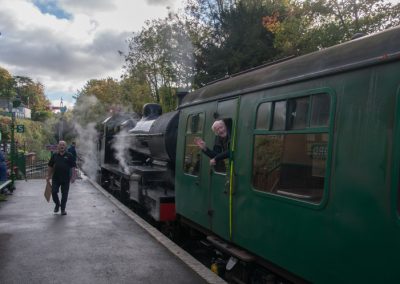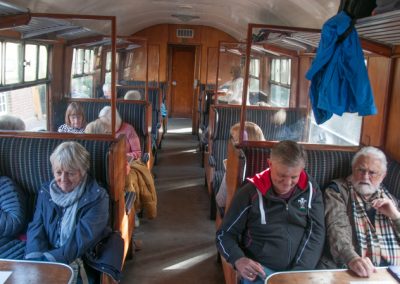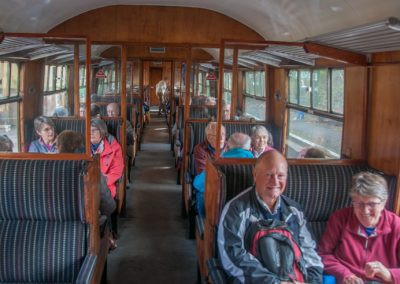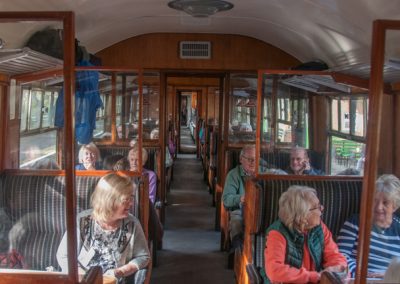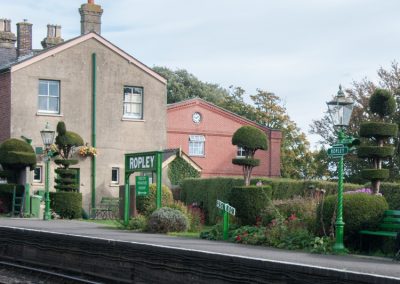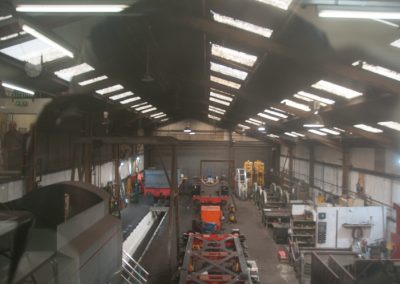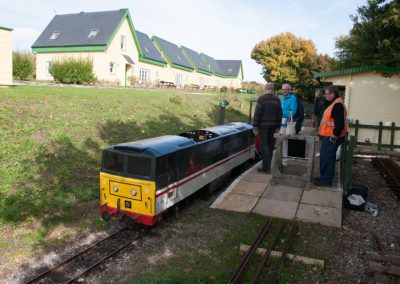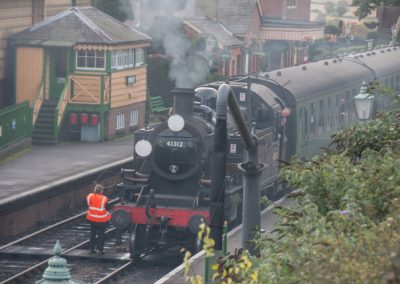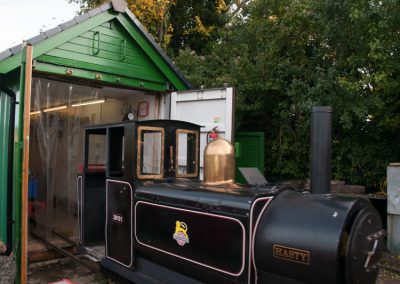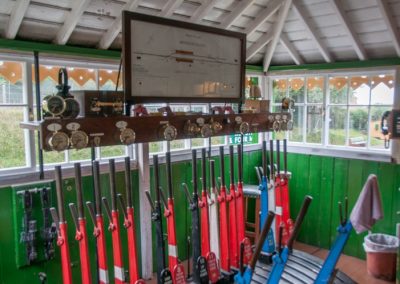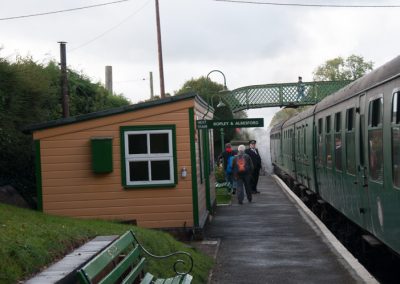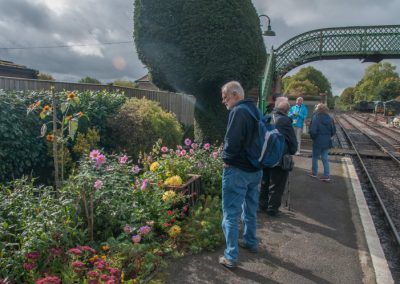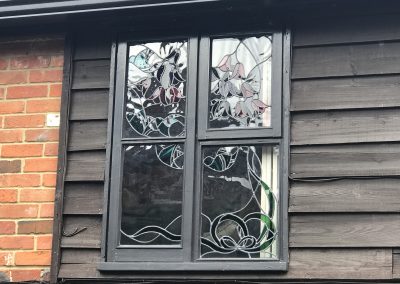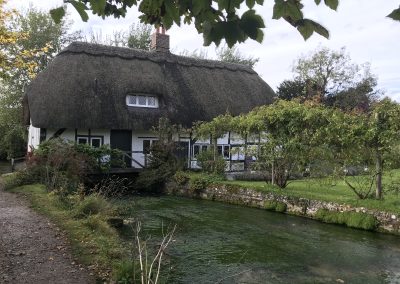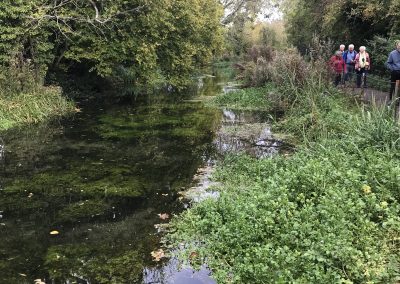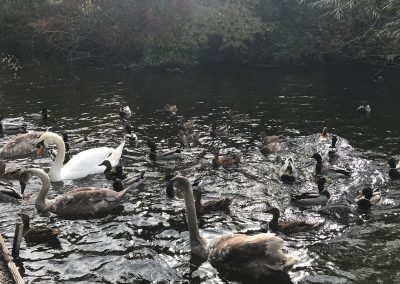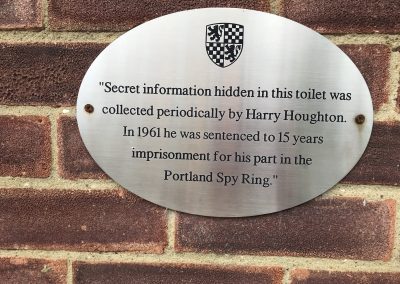The Watercress Line is a heritage railway in Hampshire, running 10 miles (16 km) from New Alresford to Alton where it connects to the National Rail network. The line gained its popular name in the days when it was used to transport locally grown watercress to markets in London. There are still four companies operating in the area today. The railway currently operates regular scheduled services, along with dining trains, real ale trains and numerous special events throughout the year.
On arriving in New Alresford, the entire group boarded the train and enjoyed a wonderfully scenic ride to Alton. After a short stop to look around this station, we boarded for the return journey.
The Heritage Railway Group alighted at “Medstead and Four Marks” – the highest station in Hampshire – fully restored in the style of a quiet 1940s Southern Railway station. The line’s Signal and Telegraph department, and Building department are all located here, in and around the station yard. There are several sidings. This is where the greatest number of trains pass each other on standard running days. After this it was on to “Ropley,” the engineering centre of the line and the location of the locomotive maintenance and running sheds. The station has flower beds and topiary, and the largest of the line’s four signal boxes, controlling movements through the station, as well as much shunting to and from the locomotive yard. Finally, they arrived back in Alresford and enjoyed looking around the museum. Most of the carriage stock is stored at this station, with Alresford Train Care performing day-to-day maintenance and cleaning of the carriages.
Whilst the Heritage Group were engaged in all things train related, the rest of us returned to New Alresford and enjoyed a walking tour led by Clare, learning more about this beautiful Georgian Town which for many centuries was a prosperous wool town.
Old Alresford is mentioned in the Domesday Book, but the present town of New Alresford did not come into existence much before 1200 at the time when the Great Weir was being built to create Old Alresford Pond as a fishpond for the Bishop’s Palace at Bishop’s Sutton and a reservoir for the mills along the Itchen. However, the Georgian houses you see today rose from the ashes of great fires in the 17th Century, but many retain their original 13th century cellars. The Fulling Mill and Eel House along the riverside walk were just some to the lovely sites we took in on our stroll.
Thanks to Bob Reeve and Clare Clayton for organising this extremely interesting and enjoyable trip.


